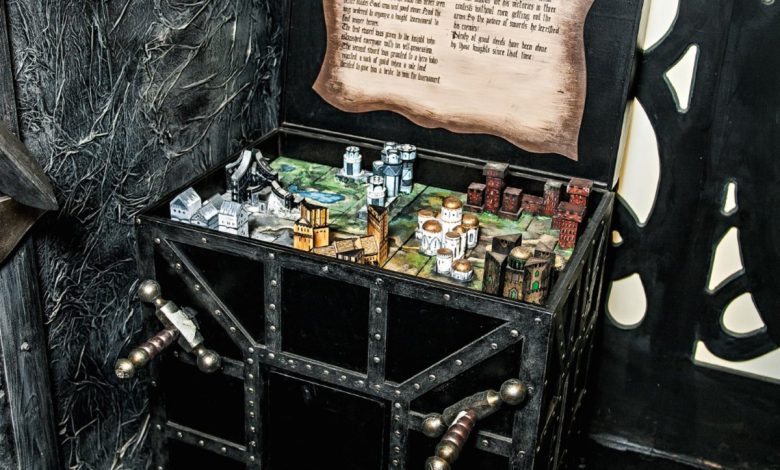
An escape room is an interactive and immersive game played in a locked room.
Players must solve a series of puzzles and riddles using clues, hints, and strategy to complete the objectives at hand and escape within a set time limit.
The success or failure of an escape room hinges on the quality of its puzzles.
Players expect challenging yet logical puzzles that make sense in context with the theme and story of the game.
If you’re able to walk into an escape room and immediately see how every puzzle works without any explanation from the designers, you’ve got yourself a good escape game. (Ruberg 2016)
When we created our first escape room back in 2012 we were constantly looking for articles about what makes a good ‘escape room experience’.
We had no escape room friends and we couldn’t find any decent articles about it.
So we decided to create our own rules.
But we also wanted to share what we learned with other people who try to create their own ‘rooms as well, as a way of giving back something to the community.
1) Theme – Make it believable!
In an escape room you need to believe two things: firstly that your scenario really happened and secondly, everything in it makes sense.
A theme is crucial for getting players immersed in the story right from the start.
It sets up expectations throughout the game and maintains players’ suspension of disbelief.
In order to make a good escape room, you need to investigate the theme in great depth and decide what story you’re going to tell.
Then design everything in your scenario around that story.
For example, if players are going into a laboratory they expect scientists and laboratory equipment.
Any puzzles or tasks that don’t fit this setting will damage their suspension of disbelief and therefore destroy their immersion.
2) Gameplay – Make it fun!
To get players out of the door you need more than just a well-designed, immersive theme; it also needs to be fun.
Your puzzles need to be entertaining enough for players so they’ll want to play again and recommend your room to others who enjoy escape games.
The best way of making the gameplay more fun is by adding elements that players don’t normally use in everyday life.
For example, we once designed an escape room where players found themselves in a spaceship and had to solve puzzles with zero-gravity as an integral part of the story.
Another time we created a ‘murder mystery’ room where players were interrogating suspects, cracking codes, and solving riddles to find who killed their client’s brother.
I recommend watching some other people’s escape rooms on YouTube to see how they handle certain interactions and what kind of puzzles.
Then start brainstorming what kind of special things you could add to your own room.
3) Mechanisms – Keep it simple!
Make sure all the mechanisms you design are easy to understand and will withstand wear and tear.
We’ve seen many escape rooms where the mechanisms simply didn’t work after a few runs.
This is very frustrating for players who understand what’s wrong with them but can’t solve anything because they’re “broken”.
It also hurts the reputation of other escape games when players tell their friends about their disappointing experience in an ‘impossible’ room.
Designing good mechanisms is not hard; most of the time we only need to make sure everything works properly and that there is enough space for people to move around.
4) Separating elements – Hide the puzzles!
The best escape games have a good balance between hidden and visible elements.
When you’re designing your room try to hide as many interactions as you can from players’ sight, but still give them enough freedom to discover different elements by themselves or with others.
There are several ways of hiding things from players: for example, mechanisms that only appear when triggered by an action, with rope pulls that open secret doors, or with laser sensors that open locks.
You also need to think about what kind of puzzle designs work well in your scenario.
Imagine finding yourself in a dark cave; it would be pointless to create light-based puzzles that you need to solve in the dark.
On the other hand, if you’re at a restaurant trying to find out who spiked the couple’s drinks, it would make no sense for players to have to taste everyone’s dishes until they can identify who is sick.
5) Balance – A good feeling
My final tip is about how your room feels when playing through it.
Although you want people to enjoy themselves during the game, they also need time for everything to sink in after finishing it.
This means that ideally, your escape room shouldn’t feel too easy or too difficult; you should be able to reach most of your goals but not necessarily win on your first attempt.
That way players will immediately want to play again and try to find what they missed the first time.
If your game is too difficult you’ll frustrate players, but if it’s too easy then nobody will want to play again or recommend it to friends!




